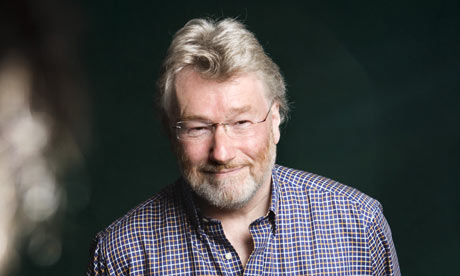At some point in the not too distant future artificial intelligences will far exceed humans in most capacities (except shopping and beer drinking). The scripts according to most Hollywood movies seem to suggest that we, humans, would be (mostly) wiped-out by AI machines, beings, robots or other non-human forms — we being the lesser-organisms, superfluous to AI needs.
Perhaps, we may find an alternate path, to a more benign coexistence, much like that posited in The Culture novels by dearly departed, Iain M. Banks. I’ll go with Mr.Banks’ version. Though, just perhaps, evolution is supposed to leave us behind, replacing our simplistic, selfish intelligence with much more advanced, non-human version.
From the Guardian:
From 2001: A Space Odyssey to Blade Runner and RoboCop to The Matrix, how humans deal with the artificial intelligence they have created has proved a fertile dystopian territory for film-makers. More recently Spike Jonze’s Her and Alex Garland’s forthcoming Ex Machina explore what it might be like to have AI creations living among us and, as Alan Turing’s famous test foregrounded, how tricky it might be to tell the flesh and blood from the chips and code.
These concerns are even troubling some of Silicon Valley’s biggest names: last month Telsa’s Elon Musk described AI as mankind’s “biggest existential threat… we need to be very careful”. What many of us don’t realise is that AI isn’t some far-off technology that only exists in film-maker’s imaginations and computer scientist’s labs. Many of our smartphones employ rudimentary AI techniques to translate languages or answer our queries, while video games employ AI to generate complex, ever-changing gaming scenarios. And so long as Silicon Valley companies such as Google and Facebook continue to acquire AI firms and hire AI experts, AI’s IQ will continue to rise…
Isn’t AI a Steven Spielberg movie?
No arguments there, but the term, which stands for “artificial intelligence”, has a more storied history than Spielberg and Kubrick’s 2001 film. The concept of artificial intelligence goes back to the birth of computing: in 1950, just 14 years after defining the concept of a general-purpose computer, Alan Turing asked “Can machines think?”
It’s something that is still at the front of our minds 64 years later, most recently becoming the core of Alex Garland’s new film, Ex Machina, which sees a young man asked to assess the humanity of a beautiful android. The concept is not a million miles removed from that set out in Turing’s 1950 paper, Computing Machinery and Intelligence, in which he laid out a proposal for the “imitation game” – what we now know as the Turing test. Hook a computer up to text terminal and let it have conversations with a human interrogator, while a real person does the same. The heart of the test is whether, when you ask the interrogator to guess which is the human, “the interrogator [will] decide wrongly as often when the game is played like this as he does when the game is played between a man and a woman”.
Turing said that asking whether machines could pass the imitation game is more useful than the vague and philosophically unclear question of whether or not they “think”. “The original question… I believe to be too meaningless to deserve discussion.” Nonetheless, he thought that by the year 2000, “the use of words and general educated opinion will have altered so much that one will be able to speak of machines thinking without expecting to be contradicted”.
In terms of natural language, he wasn’t far off. Today, it is not uncommon to hear people talking about their computers being “confused”, or taking a long time to do something because they’re “thinking about it”. But even if we are stricter about what counts as a thinking machine, it’s closer to reality than many people think.
So AI exists already?
It depends. We are still nowhere near to passing Turing’s imitation game, despite reports to the contrary. In June, a chatbot called Eugene Goostman successfully fooled a third of judges in a mock Turing test held in London into thinking it was human. But rather than being able to think, Eugene relied on a clever gimmick and a host of tricks. By pretending to be a 13-year-old boy who spoke English as a second language, the machine explained away its many incoherencies, and with a smattering of crude humour and offensive remarks, managed to redirect the conversation when unable to give a straight answer.
The most immediate use of AI tech is natural language processing: working out what we mean when we say or write a command in colloquial language. For something that babies begin to do before they can even walk, it’s an astonishingly hard task. Consider the phrase beloved of AI researchers – “time flies like an arrow, fruit flies like a banana”. Breaking the sentence down into its constituent parts confuses even native English speakers, let alone an algorithm.
Read the entire article here.

 Iain (M.) Banks is now where he rightfully belongs — hurtling through space. Though, we fear that he may well not be traveling as fast as he would have wished.
Iain (M.) Banks is now where he rightfully belongs — hurtling through space. Though, we fear that he may well not be traveling as fast as he would have wished. On June 9, 2013 we lost Iain Banks to cancer. He was a passionate human(ist) and a literary great.
On June 9, 2013 we lost Iain Banks to cancer. He was a passionate human(ist) and a literary great. Where is the technology of the Culture when it’s most needed? Nothing more to add.
Where is the technology of the Culture when it’s most needed? Nothing more to add.